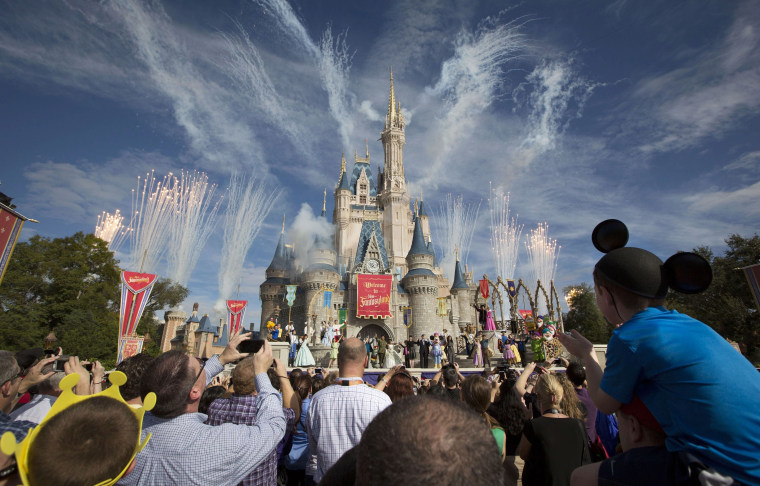Democrats and Republicans on Capitol Hill seem to have few things in common these days. But together, many members of Congress of both parties have racked up a staggering tab in recent years paying for their luxurious lifestyles on donors’ dimes. A South Dakota senator spent $403,000 at West Virginia’s Greenbrier Sports Club. A Missouri senator spent $117,000 at the Disney Yacht Club Resort in Florida. An Ohio congressman spent $64,000 on Broadway tickets in New York City. However, some members can’t quench their thirst for luxury living domestically, so they visit five-star hotels with breathtaking panoramic views over Athens, Greece.
This runaway spending was brought to light in a new report, "How Leadership PACs Became Politicians' Preferred Ticket to Luxury Living," released on July 20 by our two government reform groups, Campaign Legal Center (CLC) and Issue One. The report highlights many bipartisan abuses of a source of funds little known beyond the beltway, but widely exploited within it: so-called leadership PACs.
Officeholder-controlled political action committees are being used to finance everything from golf club memberships to upscale resorts.
These officeholder-controlled political action committees are being used to finance everything from golf club memberships to upscale resorts. In aggregate, our research shows that federal lawmakers have used their leadership PACs to spend at least $871,000 in golf-related expenses; $741,000 at St. Regis Hotels across the country; $614,000 in the Virgin Islands and Puerto Rico; and $469,000 at Walt Disney theme parks, hotels and restaurants.
The kicker: Much of this spending would likely be illegal if politicians used their official campaign accounts to pick up the tab. These kinds of expenses cannot be paid with campaign money because campaign donations present a much greater risk of buying access or influence if they are funding the politician’s next round of golf, country club membership, clothing purchase, or trip to Disney World.
So how are these abuses possible? Because while the Federal Election Commission (FEC) has long prohibited politicians from spending official campaign funds on personal expenditures, they have failed to apply this “personal use” prohibition to leadership PACs. And Congress, which has the power to police its own members, has also remained on the sidelines.
This inaction has sent a message to both Democrats and Republicans that they can use these political committees as slush funds. The FEC’s inaction might explain why a Texas Congressman used his leadership PAC to pay $21,000 towards membership dues for a country club in Maryland, or a California Congressperson spent $10,000 on dues for a private cigar club in Virginia.
Leadership PACs were ushered into existence so that officeholders could make contributions to their colleagues. Yet since 2013, only a minority of all leadership PAC spending — just 45 percent — has been used for making contributions to other candidates or political committees. Many members give even less — some as little as seven percent — while the same members continue to spend tens of thousands of dollars between restaurants, five-star resorts and international travel.
As prominent conservative writer Peter Schweizer put it in his 2013 book, "Extortion: How Politicians Extract Your Money, Buy Votes, and Line Their Own Pockets," for many members of Congress the leadership PAC has effectively become “a second personal bank account.”
For many members of Congress the leadership PAC has effectively become “a second personal bank account.”
Some members of Congress try to explain away the spending as “fundraising expenses.” After all, the average winning House candidate spends more than $1 million for a two-year term, dedicating almost half their work week to raising money. Here’s the problem: Even if a pitch for leadership PAC donations does occur on the Pebble Beach golf course, most of the funds raised are not being used to help fellow lawmakers, but rather to book the next fundraiser at Pebble Beach, Las Vegas, Disney World, Puerto Rico, Aspen, or Palm Beach.
Fortunately, there are solutions to this abuse. The FEC should adopt new rules clarifying that the personal use prohibition that already applies to campaign accounts also applies to leadership PACs. This would be an easy step, and the FEC clearly has the authority to take it.
For its part, Congress could pass legislation to crack down on leadership PACs, and the ethics committees in the House and Senate could enforce their rules applying a personal use ban to leadership PACs.
Without a rule-making by the FEC or congressional action, the abuse will persist, and likely worsen, by members on both sides of the aisle. Closing this loophole is long overdue.
Adav Noti is the senior director of trial litigation at Campaign Legal Center (CLC) and the former associate general counsel at the Federal Election Commission (FEC). Meredith McGehee is the executive director of Issue One and strategic adviser to the Campaign Legal Center. Follow them on Twitter @AdavNoti and @IOMcGehee.
